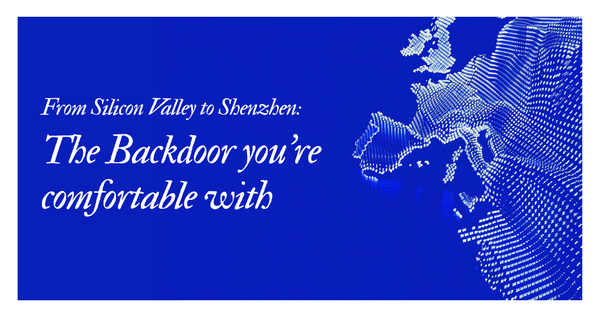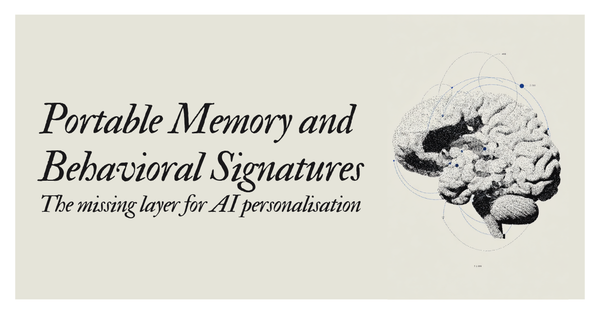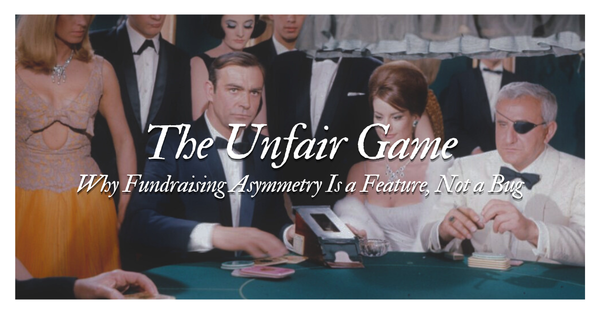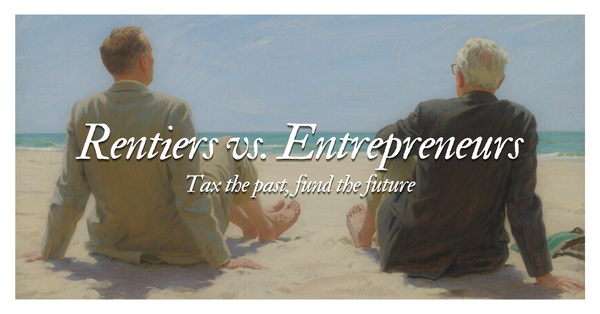The Bright Future of User Research 🔍
As some of you may know, I've been looking into design tools for a while.
- Personally, I quickly got sucked into the rabbit-hole of all-things design as a teenager when I started playing around with the Adobe suite, producing below-average memes and above-average (?) skateboarding clips. Since then I've kept a curious eye on the developments in the space.
- Professionally, I've been looking into how software is helping bridge the gap, or "break the silos" in consultant-speak, between different profiles across organisations.
- In the same way that Dataiku works towards this goal in the world of data science, I believe there is space for a major player in the user research space to create the next hub for customer information (this belief might deserve its own article later down the line).
"Hasn't Figma already done this?
Isn't user research a subset of design?"
The short answer is no and I'll make a case for why it's different
Here's a quick rundown of what we'll discuss:
The importance and momentum of design-driven organisations
- The edge design-driven organisations have over their competition
- Different frameworks to analyse design maturity (and use this as a proxy for user research maturity)
- The design transformation that companies are undergoing
User research
- The missing piece of the product development puzzle
- The challenges user research has been facing
- The gradual shift in adoption
- Why will it happen in the next 5 years?
- Where are we now?
Closing statements memes
Let's get into it!
The importance & momentum of design-driven organisations
This article is about user research and customer insights but, bear with me, I'm using design trends as a proxy for this next wave to come.
1- Design-driven organisations have an edge over their competition
In October 2018, 2.5 years ago already, it was mathematically proven that companies committing to investing in their design function outperformed their peers by as much as 2-to-1.

This analysis was pioneered by the work done with the Design Management Institute in 2013 where they created an index of companies evaluating metrics such as "senior-level commitment to design", "design investments", "penetration of design within organisations".
Because of the proven results, organisations have been figuring out how to implement "design strategies". Since without data you're just another person with an opinion, many "design maturity" frameworks have emerged to analyse the design-proficiency of organisations.
2- Analysing Design Maturity
Two frameworks stand out in my opinion: the "4-step Design Ladder" and the "Invision Design Maturity Model". The two show how organisations have matured on this topic over time. Back in 2001, the Danish Design Center created the framework below:

In 2019, Invision released their Design-Maturity Model:
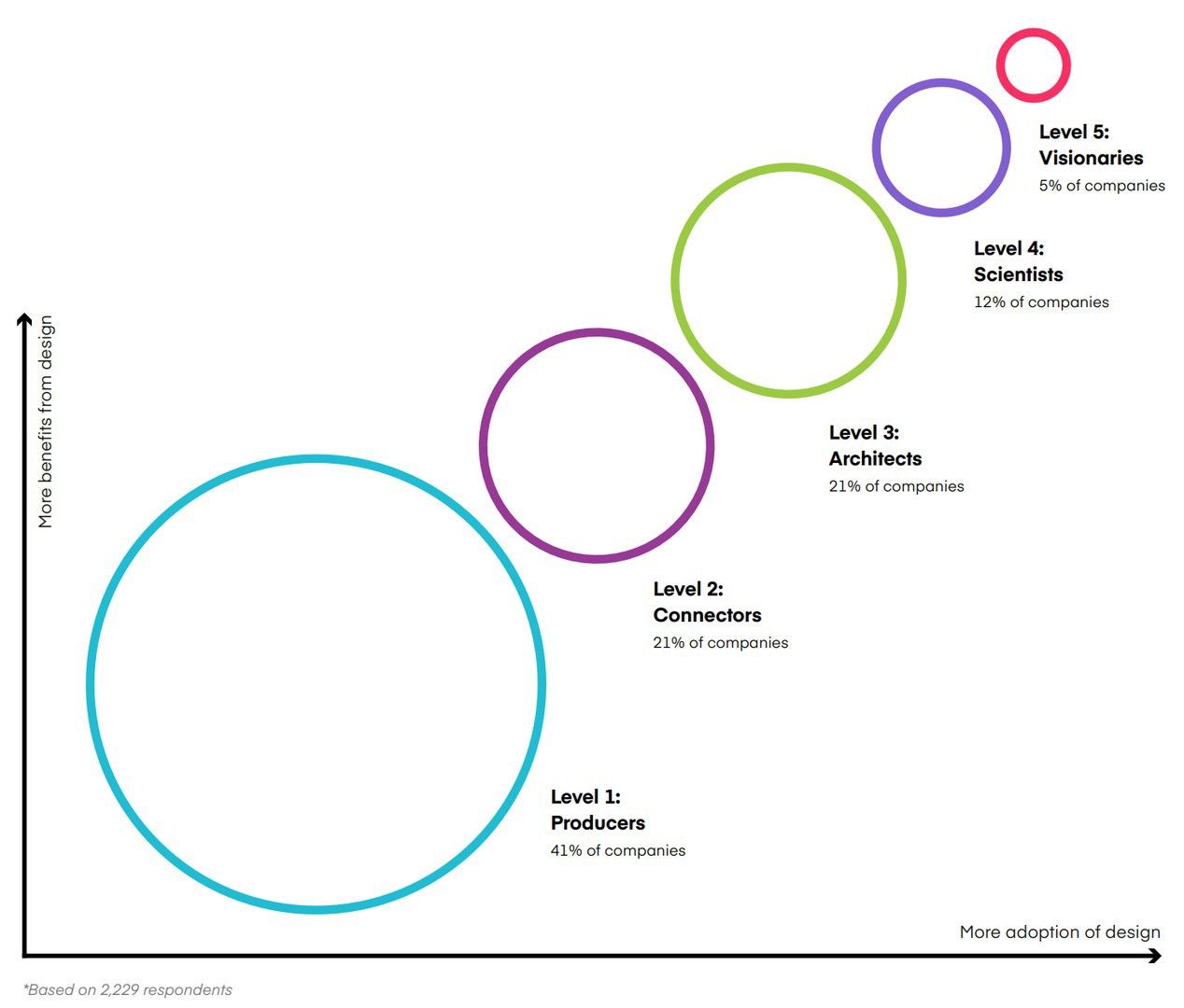
- What I find interesting with the two charts above is that you see a gradual progression in maturity over the past 20 years.
- Companies have shifted from "non-design" to "design=styling" to "design is now part of the organisation " to "design is becoming a strategic priority for us".
- Step 2 of the Design ladder equals Level 1 of the Invision framework and as such the understanding of the value of design has grown immensely.
3- The Design transformation that companies are undergoing
If you're not in a design organisation or not in my venture-tech-bubble you might be thinking to yourself "great - it took 20+ years for people to realise the value of design, why would it be any different for new tools?". I believe that with the tech penetration we've seen in the past 10 years, the rate of adoption of new tools has dramatically accelerated. In 2017, 87% of managers surveyed by Adobe recognised that:
"hiring more UX designers was the top priority for the organisation".
This was ahead of graphic designers and PMs, tied with software developers.
Side note
Because of this rush to bring on design capabilities in companies, titles in the world of Customer Experience (CX) have become increasingly confusing: UI designer, UX researcher, Interface designer, UX/UI developer, Experience designer...
In my opinion this has also contributed to recruiters and inexperienced managers looking for unicorn profiles who can run design, code, user research all at once. The ultimate 10x researcher (boy does this thread never get old)!
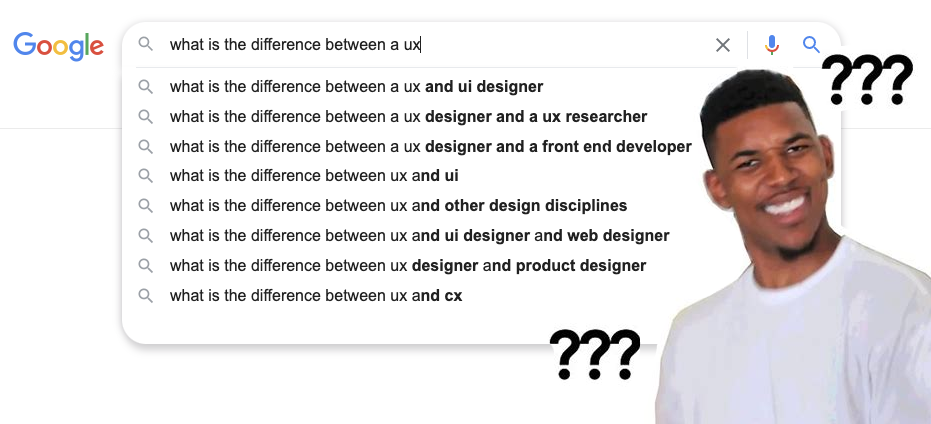
To joke about the fabulous world of UX job titles, Aaron Weyenberg published this funny UX job title generator. FYI I'm a Chief User Experience Champion - watch out 👀
Anyhow, what has been interesting for me to witness along the increased corporate interest for design tools is the investor appetite for such tools.
The formula is simple: Studies show you need to hire more and need to invest in tools -> Companies start hiring more and spending money on said tools. And when companies decide to spend money:

The world of design hasn't been an exception to this rule. Figma hitting a $10bn valuation in less than 5 years, Canva valued $40bn, Invision raising $350m. Each of those tools have in some shape or form contributed to making design a core part of the product development process.
User Research/Customer Insights will be to the 2020's what Design was to the 2010's and Data analytics was to the 2000's.
User Research
Don Norman, "User Experience Architect" at Apple, coined the term User Experience in the 1990s to define the entire experience with a brand but it evolved over time to define digital experiences.
“I invented the term because I thought human interface and usability were too narrow. I wanted to cover all aspects of the person’s experience with the system including industrial design graphics, the interface, the physical interaction and the manual. Since then the term has spread widely, so much so that it is starting to lose its meaning.”
1- The missing piece of the product development puzzle
When you look at the product development lifecycle, most of the areas (product, design, development, tracking) have an emerging winner along with a plethora of adjacent players.

Let's clarify what I mean by "User Research" quickly first as it's a broad category:

The "Passive Insights" and "Design" categories have gotten more funding thanks to investors investing into "Analytics" and "Design" tools. But what about the other categories? I believe VC money hasn't been flowing as aggressively in User Research tools has it has historically been perceived as the responsibility of a small group. It's easier to show the TAM of designers or analysts than it is of user researchers simply because of their current lower penetration in companies.

2- But why has User Research historically struggled to make its mark in organisations?
I see 4 main reasons to this:
- Time-consuming: Running user testing is time consuming. Both in terms of setup and watching video content. The Usertesting acquisition of Truthlab to "surface key insights quicker" is a testament to this. Watching video is great to build customer empathy and convince your product team that, "yes, I'm not making up this feature request", but ultimately, it's a huge time sink.
- Costly: Running user testing is very expensive (recruiting, incentives) and the few tools that help achieve this digitally, charge enterprise-size amounts.

- Organisational: The shift from Waterfall to Agile has forced UX Leaders to change the way they run research. Showing results within design sprints and enabling product teams to run quick (self-serve) testing autonomously have become crucial parts of the UX research process. This challenging dynamic between sprint time frames and research time frames have led some orgs to skip the User Research phase as exemplified by a quote from a former Deliveroo User Research lead:
"I think there is a tyranny to the 2 week sprint if you’re doing user research, people from the outside have no idea about the time it takes to run proper user research."
- Inadequate product offerings: Tools haven't kept up and contributed to further organisational disconnect. Of the few tools that exist to address User Research, only a handful cover multiple sub-sectors. This creates a need to bundle multiple tools together for a satisfactory outcome. Back to square 1 mixing and matching Zoom with Miro and offline notes.

3- The Gradual shift in adoption
Now that all this has been said I believe that a (clearer and clearer) shift is taking place. I have been looking into this topic for over a year and have already seen the shift happening. After fighting to recruit UX designers, organisations are growing their user research teams.
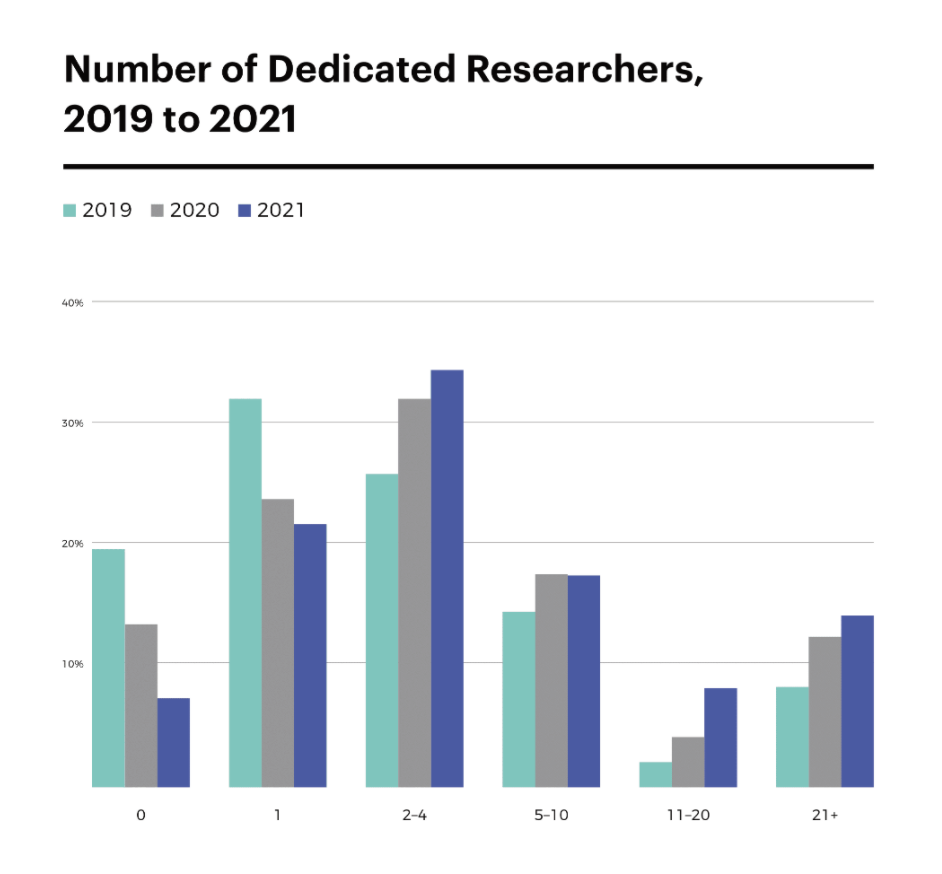
As the teams are growing, so are their own needs for proper tools. User Research is an area in which practitioners are using a wide set of tools, yet all equally suboptimal for the job. Zoom, Airtable, Miro boards, Google docs are all great versatile tools but they aren't designed for the user research process...
I believe user research will be the entry point for the future central repository of customer insights and knowledge. Why? Because this is historically what has been run by user researchers, but with very little data and long iteration cycles.
4- Why will it happen in the next 5 years?
Organisations are changing fast and I believe the shift will happen soon for 2 main reasons:
- Management maturity
When thinking about new emerging technologies, I often wonder about who would be the sponsor for this at the board level. The analytics and design spaces are now represented at the VP level and titles such as the "Chief Design Officer" or "Chief Data Officer" are common. While this level of penetration in the higher parts of the org hasn't materialised yet for the world of UX research, my hunch is that a "Chief Experience Officer" or a "Chief Insights Officer" will become the sponsor for the UX research world. The trendy Product-Led Growth startups will have to focus much more on understanding their customers to nail their product decisions. This will require much tighter feedback loops and push the UX research work to the board level.
As a Research Operations lead put it, "For the last few years, CxOs have been saying “we’re going to be customer centric” and using numbers and data to justify their decision making process." In doing so, some organisations have failed to get context and a true understanding of their customers through an additional layer of qualitative data. Certain forward-leaning organisations such as Booking.com are already merging the research and data functions to jointly cover qualitative and quantitative topics. - Technological advances:
Design collaboration tools like Figma and Vev are bringing teams closer together. While research teams have been historically working in a figurative corner (in 2019, a survey by UserZoom highlighted that "Inclusion within product development" was the nº1 challenge faced by UX research teams). The tools developed above, and many others, are contributing an accelerated pace of collaboration which in turn will lead to insights surfacing faster, as exemplified by the survey results below:

Custom tools will be needed to process the information generated from this growing feedback loop - they are and will be built in the next 5 years.
5- But where are we now exactly?
- Managerial maturity:
I believe that we are at the stage where most organisations are working hard to evangelise user research by highlighting the value of great customer experience, at the risk of no-one really owning the outcomes. Everyone is being told that the power of research is in their hands and I'm sure that a few of you have thought that "it can't be that hard" to conduct research.
This seems to be validated by the survey below where 1/3 of organisations rely on blurry accountability 👇
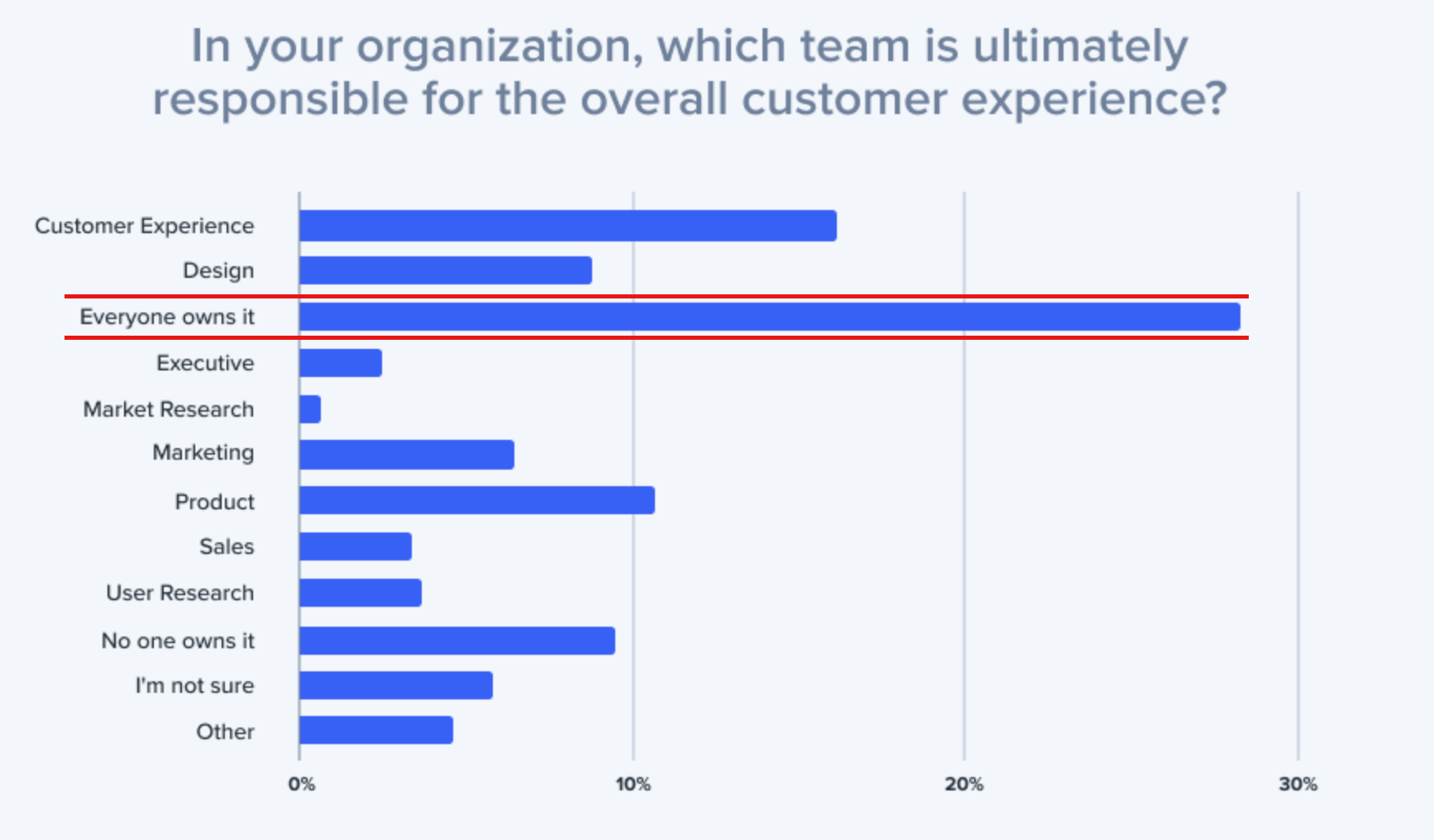
"Evangelizing UX" doesn't mean it's for everyone. Yes, more attention to research practices is important but it doesn't mean that everyone should do it. As adoption grows, you want to avoid self-awarded Subject Matter Experts taking the freedom to carry out "unregulated" research. It will certainly lead to worse outcomes and perhaps worse, wrong conclusions and decisions. You need trained experts to shepherd the newcomers.

I like using the Dunning-Kruger effect as an alternative to the Gartner Hype Cycle when thinking about new software tools which give access to knowledge which was previously held by a single department. Here's a tentative visual explanation:
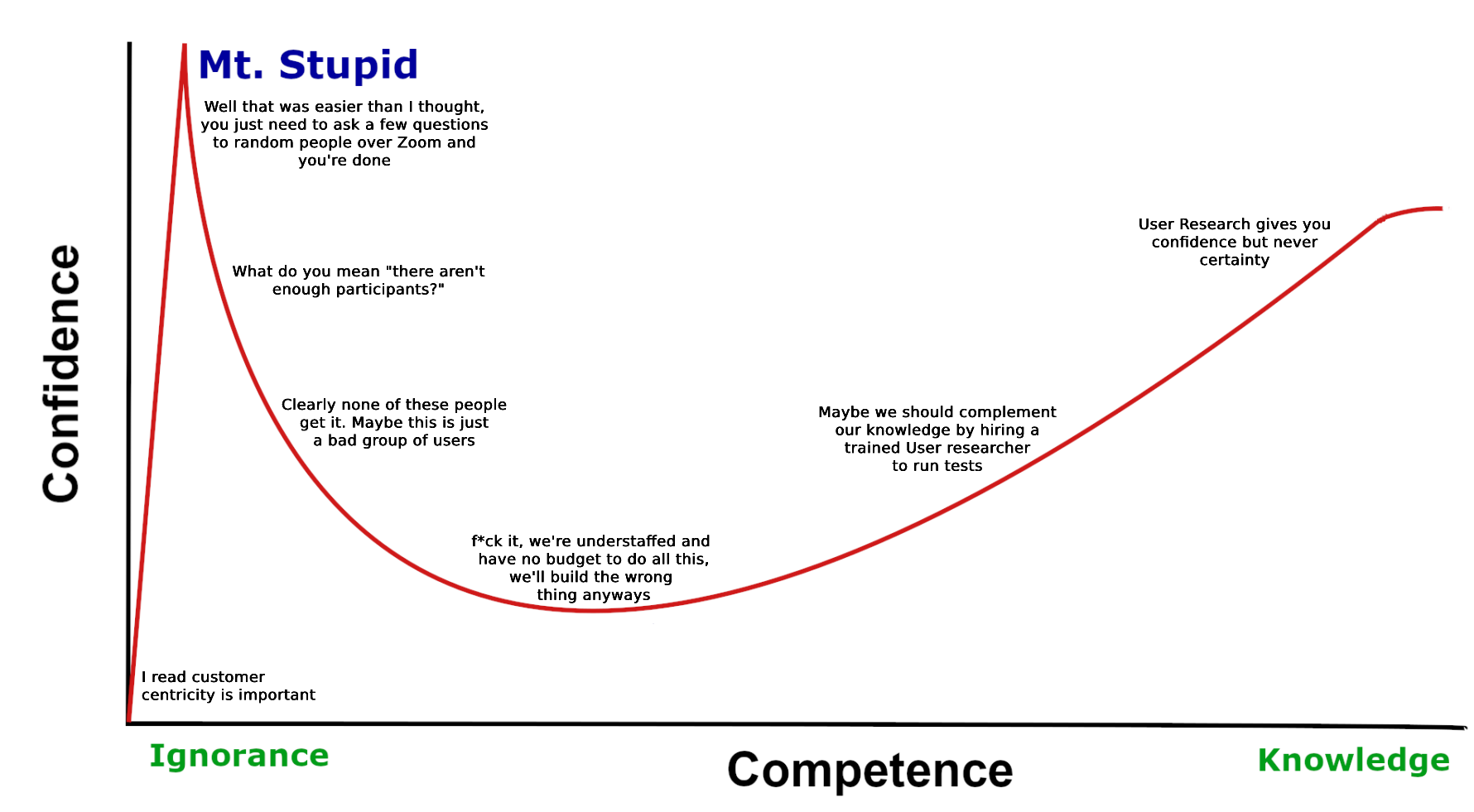
Here is the less scientific version:
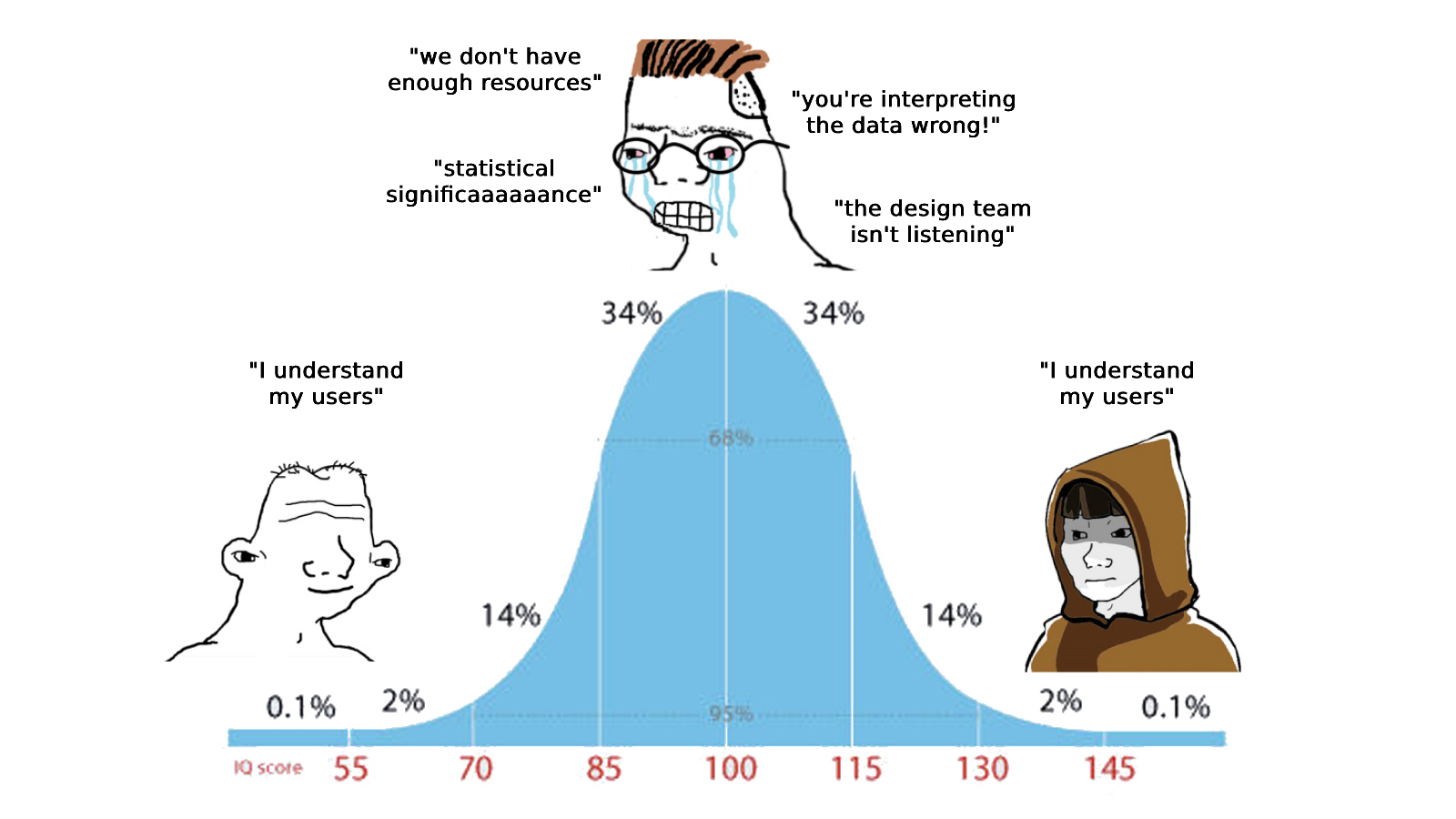
- Technological Advances:
If you recall the 5 different categories in User Research (Active research, passive insights, recruiting/research, insight management, design), more than 200 startups are fighting for a piece of the growing pie.
The map below shows all the different overlapping offerings and gives you a feel for what an emerging user research stack could look like

I won't be digging into the subtleties of each tool but rather would like to comment on the tools with the broadest reach across all categories. In my mind there are currently 4 contenders fighting for the "all-in-one tool user insights platform":

Userzoom & Usertesting are on the enterprise-end and have been working to grow their offering through acquisitions after being around for about 15 years. They started building tools built around usability testing and validating a solution once it's been built.
- UserTesting built its technology and differentiation on video which might have been a strong point 10 years ago but is now, in my opinion, a hurdle. Organisations are optimising for speed of insights and video is unfortunately not the fastest medium to extract insights from. The UserTesting CEO Andy McMillan said it himself in an interview: “We’re delivering an experience back to our customers, it doesn’t scale like a data product does, you have to put the time in to get the value out”. "Putting time in" is a hard sell for organisations with small (if any) research teams.
- UserZoom has been trying to complete its offering by acquiring Validately and EnjoyHQ. Having spoken with users of the solution, one quote from a Senior UX designer at a very successful german tech startup stood out to me: "Userzoom is very 10-years-ago-ish, it’s not great but it does the job. That’s the irony of the space, all those tools claim to help put user centricity at the core of what they do, but their products don’t reflect it, it’s just great marketing".
At the end of the day, while those companies might become very healthy and successful businesses, I don't think they will be the tools that will change the way organisations run user research and collect user data in the same way that Maze or Sprig will.
- Maze has built their platform around speed of insights and beautiful looking reports to share to all stakeholders tied to product development. This makes the process of being involved much less complex and contributes to the democratisation and understanding of user research.

- Sprig (formerly Userleap), like Maze, has built their product with speed-to-insights in mind. Their micro-survey features are a great way to get small teams to start measuring qualitative feedback and lay the foundation for a customer-centric organisation.

I have no crystal ball and who knows how the market will shape, perhaps a new player will come from a totally different angle (sales? marketing?) and become the repository for customer knowledge. What I do know is that it will lead to better products and that on its own is incredibly exciting to watch.
I hope this article has triggered some interesting thoughts on your end, I'd love to hear about them as well as your feedback - this is a post about user research and feedback loops after all 😉!
Closing memes 🤹♂️
Related content that I wish I could've fit in elegantly into the above article but wasn't able to:
I label increasingly nonsensical images with ‘UI’ and ‘UX’ and hope they get used in serious presentations pic.twitter.com/tDJgRp6CO5
— Sebastiaan de With (@sdw) March 15, 2016

By now, you hopefully know what to do next time someone argues that "uSeR rEsEaRcH iS a WaStE oF mOnEy":


